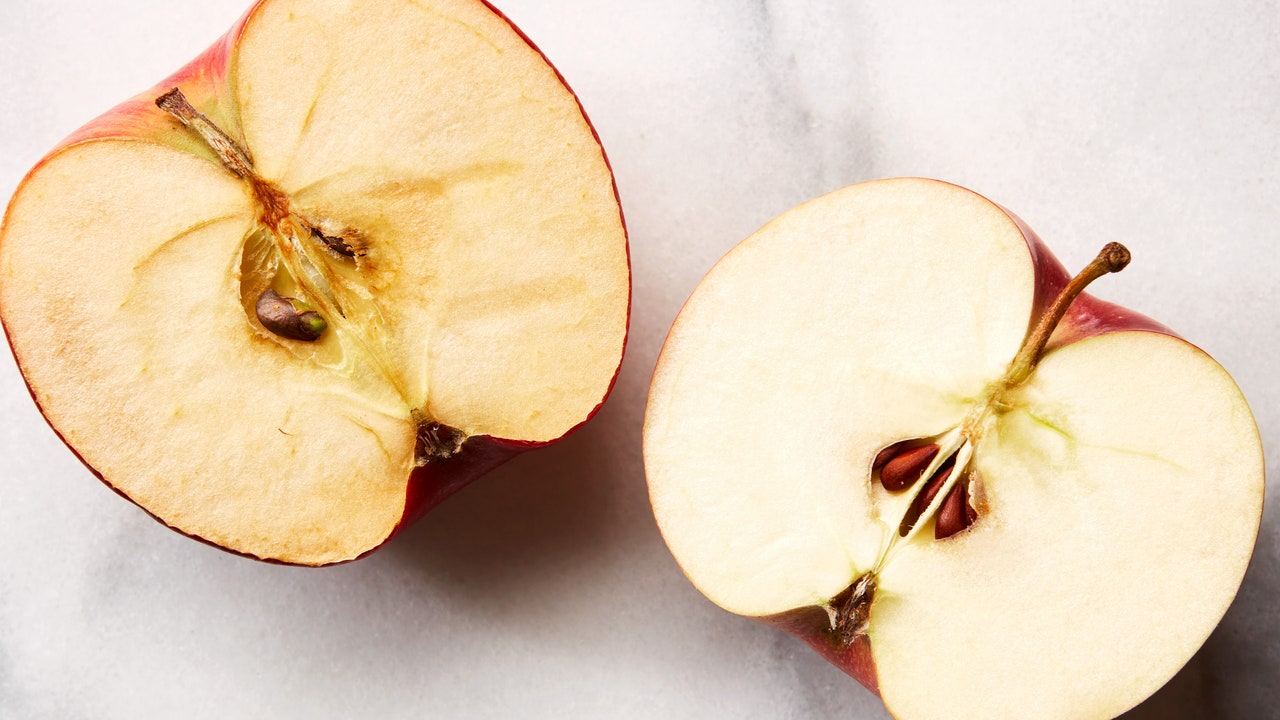Picture this: You’re toting an orchard’s-worth of fresh apples home from your local farmers market, dreaming about the many ways you’ll put the haul to use (apple pie! applesauce! caramel apple cheesecake!). Upon your arrival, you can hardly wait for a taste, so you slice into one of those gorgeous apples and behold its juicy, glistening interior, all white and creamy and crisp. You turn around to grab the peanut butter, but when you look back to the cutting board—no, that can’t be! The flesh of the apple has already started turning brown.
No matter how fresh the fruit is, a sliced apple is likely to start browning in a grand total of two minutes. Why does your favorite fall fruit seem to deteriorate so quickly? And how can you stop apples from browning forevermore? The truth is, you can’t. But there are some things you can do to delay the process.
Home cooks have come up with plenty of creative ways to keep sliced apples from turning brown, such as rubbing slices with lemon juice or soaking apples in honey water or lemon-lime soda. But Which of these methods actually work? More on that below, but first: Why is your perfect apple changing the color of its flesh in the first place?
Why do apples brown when sliced?
According to Tenley Fitzgerald, vice president of marketing at Yes! Apples, a network of New York–based apple farms, the unsightly hue is the result of a process called enzymatic browning. For more on what that means, I spoke to Christopher Watkins, a professor at Cornell’s School of Integrative Plant Science Horticulture Section, whose research focuses on apple storage life and quality. Watkins explains that visual browning is the by-product of an interaction between the apple’s naturally occurring phenolic compounds and an enzyme called polyphenol oxidase (PPO). “Normally the phenols and PPO are [stored] in separate places in the cell,” Watkins explains. But when you slice into an apple, you damage the membranes, allowing these enzymes to come into contact. PPO facilitates the reaction between the phenols and oxygen, causing the apple to produce brown-colored melanins. (Yes, the same melanin that brings color to human skin.)
But why do some types of apples brown faster than others? Different varieties of the fruit contain varying amounts of the above compounds. “You can have an apple variety with high phenolics but low enzyme activity, and the reverse,” says Watkins. Antioxidants also play a role here: They slow the chemical reaction, so apples with high antioxidant levels are slower to brown.
McIntosh, Golden Delicious, and Fuji apples are relatively quick to brown; Honeycrisp and Snapdragon apples brown at a moderate rate; and Pink Lady, Empire, and Cortland apples are slow to brown. “Browning resistance can be passed down genetically through apple breeding programs,” says Watkins. Some of the most popular apple varieties, like white-fleshed Pink Lady apples, are a direct result of such crossbreeding. Only one variety of the fruit—Arctic apples—has been genetically engineered to not brown. All in all, a lesson in why it’s important to choose your apples wisely.
